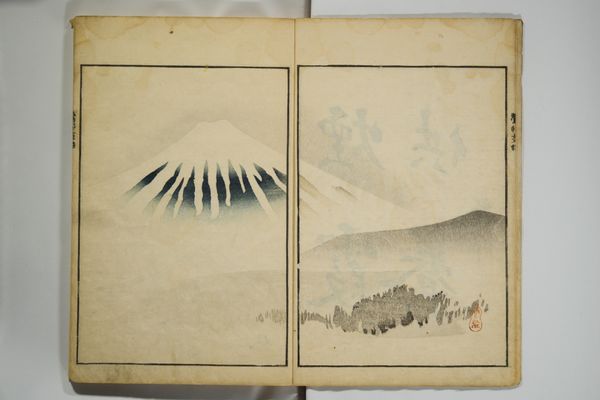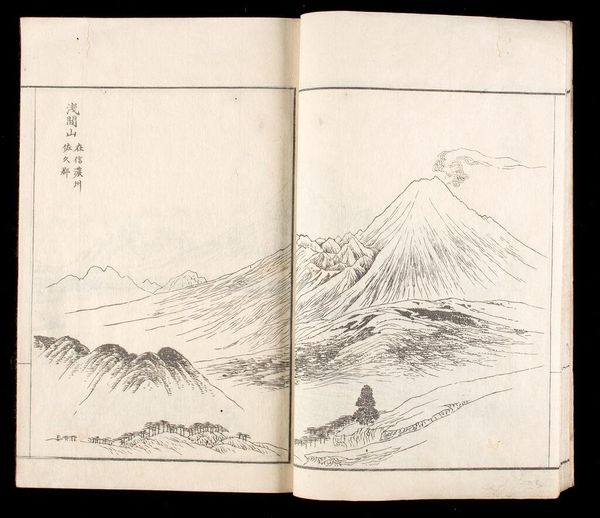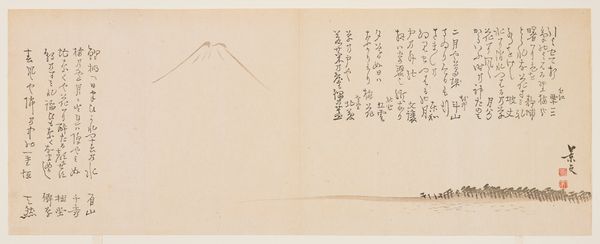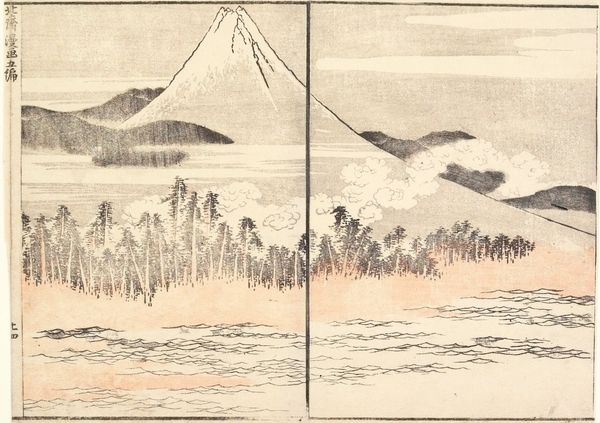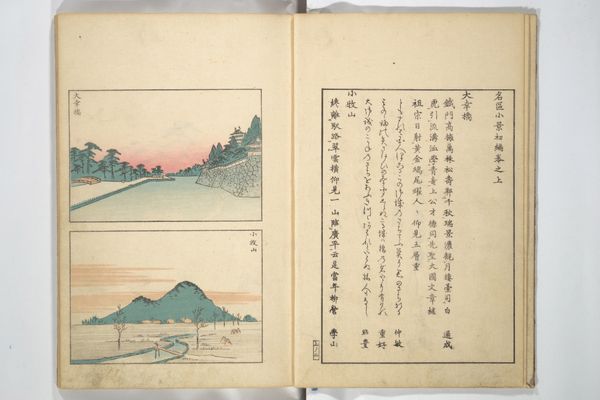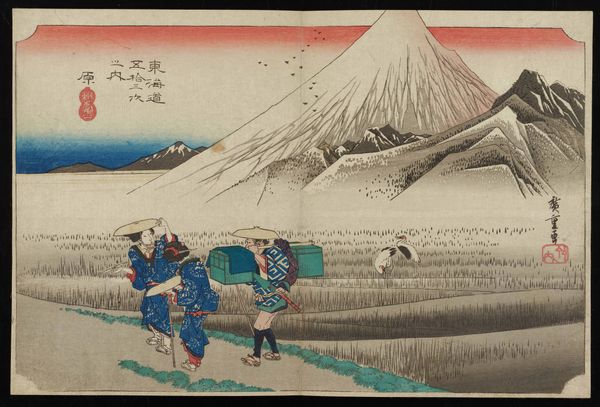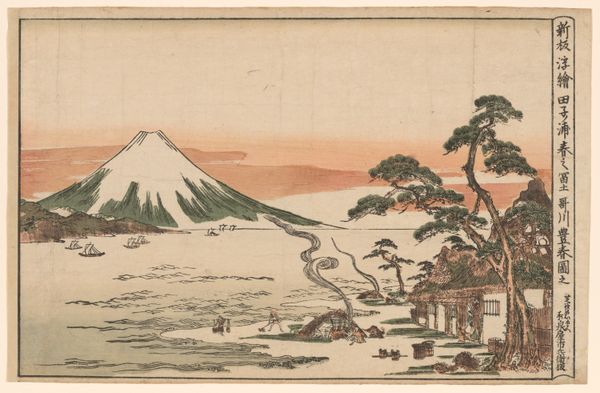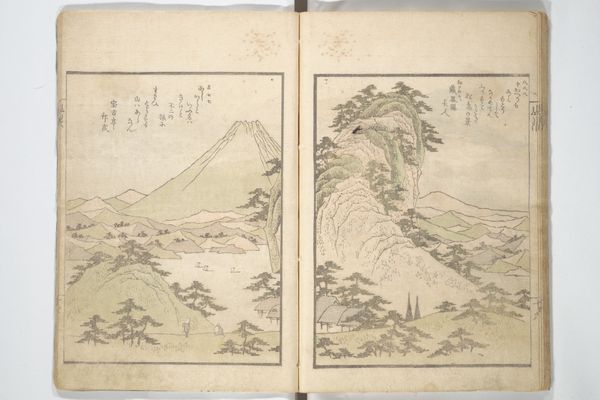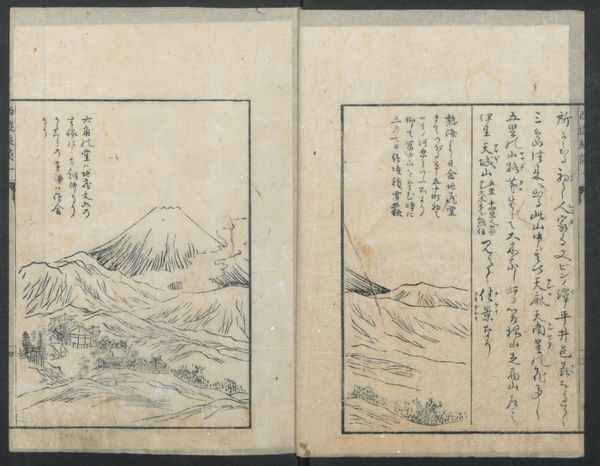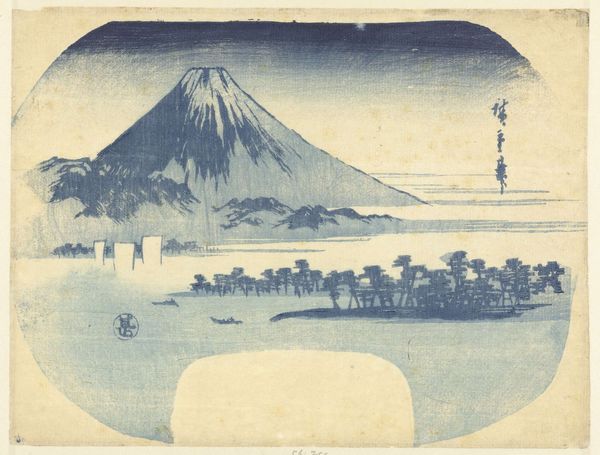
painting, watercolor
#
water colours
#
painting
#
asian-art
#
sketch book
#
landscape
#
ukiyo-e
#
watercolor
Dimensions: 10 11/16 × 7 5/16 in. (27.2 × 18.5 cm)
Copyright: Public Domain
Editor: This is Sakai Hōitsu's "Ōson gafu," a picture album from 1817 rendered in watercolor. It's beautiful and ethereal! What I find interesting is the dual landscape. What do you see in this piece, especially given the social and historical climate of Japan at the time? Curator: Thank you, it is compelling! I see two facing landscapes offering commentary on Japanese identity in a time of increasing Western influence. The distinct yet connected depictions subtly push us to reflect on how insularity and connection impact cultural definition. How do these juxtaposed landscapes challenge us to consider binaries like tradition and modernity or even Japan's internal dialogues on openness? Editor: That's fascinating! So, it's not just a pretty picture but a visual argument about Japan's place in a changing world. I didn't catch that nuance. Is it reaching for both distinctness and unity? Curator: Precisely! It uses familiar artistic language – the landscape – to engage with complex social and political questions. We need to ask ourselves if it's a form of resistance, or is Hōitsu reconciling these opposing forces, suggesting Japan can embrace change while maintaining its essence? Editor: This adds a whole new layer. It makes me reconsider how art, even seemingly traditional art, can engage with timely debates. I see how art reflects identity on many levels. Curator: It is, isn't it? Art can speak volumes about identity, offering insight into a world in transition. Examining how art intersects with culture truly transforms our view.
Comments
No comments
Be the first to comment and join the conversation on the ultimate creative platform.
